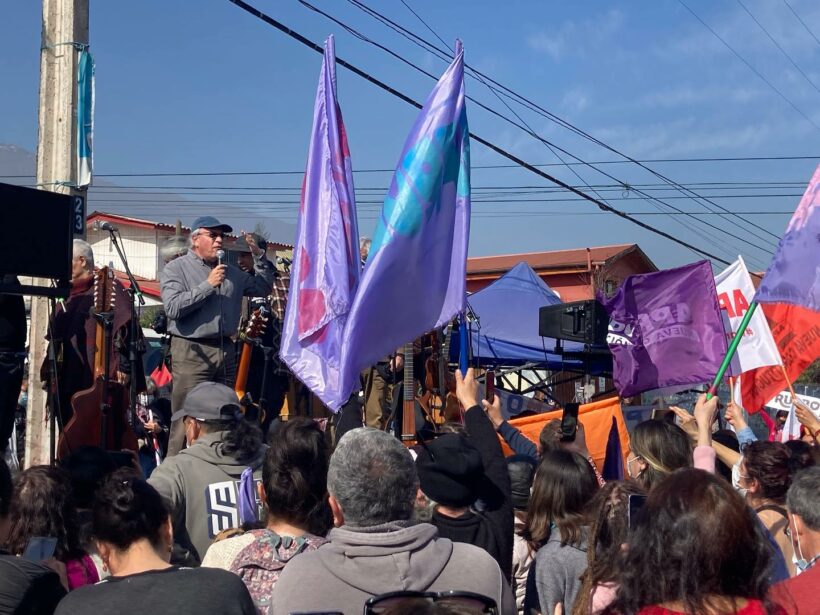Today a bill entered the National Congress to be processed, which authorises the erection of a Memorial and Memory Circuit in the Commune of La Reina, in memory of the victims thrown into the sea by the Chilean Army during the civil-military dictatorship.
Between 1973 and 1987, the Tobalaba Aerodrome was the headquarters of the Army Aviation Command, from which between 700 and 900 people were transferred to be later thrown into the sea. The nine Puma helicopters that operated from there were used in the “Caravan of Death” on trips to the north and south of the country, resulting in more than a hundred victims.
The group departed from Tobalaba airfield on 30 September 1973, initially travelling to cities in central and southern Chile such as Rancagua, Curicó, Talca, Linares, Concepción, Temuco, Valdivia, Puerto Montt and Cauquenes, returning on 6 October of the same year with a toll of 26 victims.
In northern Chile, the mission departed on 16 October 1973, visiting the cities of La Serena, Copiapó, Antofagasta, Calama, Iquique, Pisagua and Arica. The death toll was 71 people.
people. The final return to Santiago took place on 22 October of that year.
Subsequently, between 1975 and 1978, the military aircraft stationed at Tobalaba transferred between 700 and 900 bodies of political prisoners who were thrown into the sea, tied to pieces of iron rails, as has been reliably accredited, and continued to operate until the last years of the military regime. One of these bodies, that of teacher Marta Ugarte, kidnapped and tortured in Villa Grimaldi, was returned by the sea to a beach in Los Molles, Region V of Valparaíso.
The Tobalaba aerodrome was the centre of operations of the Aviation Command during the entire period of the dictatorship – located a short distance from Villa Grimaldi, the Telecommunications Command, the War Academy and the Simón Bolívar Barracks – was regularly used by the DINA and the Army to eliminate the bodies of people detained in the various DINA detention, torture and extermination centres, in the so-called “triangle of death”.
In recent decades, in the commune of La Reina, different campaigns for the construction of symbolic reparation have been carried out: for many years, neighbours together with local and national memory and human rights organisations have been promoting campaigns around the Villa Grimaldi Peace Park, the Simón Bolívar memorial, the Alejando Parada-Horacio Cepeda square and the San Carlos canal, to mention but a few.
In this sense, the Memorial proposed by this Bill is part of the impulse of various local and national organisations around the preservation of historical memory and symbolic reparation to overcome the collective trauma of the human rights violations committed by State terrorism and to move towards a culture of peace and a re-encounter with one’s own history.
In this context, various neighbourhood, social and cultural organisations have been promoting the proposal for the installation of the memorial, which also has the support of neighbours in the immediate vicinity and the majority of the members of the La Reina Municipal Council, from different political sectors.
The initiative, of local and national character, has been presented in schools, neighbourhood councils and public places, as well as in other sites of memory. In this sense, the Agrupación Memorial Aeródromo Tobalaba (AMAT) carried out a signature-gathering campaign in which it received a thousand signatures in support of the initiative, including from institutions such as the National Human Rights Institute (INDH) and the Museum of Memory and Human Rights.
The project presented by the humanist Tomás Hirsch also carries the signatures of 6 other deputies and aims to authorise the construction of a memorial in memory of the victims thrown into the sea from the helicopters and light aircraft that used the Tobalaba Aerodrome in the municipality of La Reina as a base and took off from it, which will be located in the central alleyway of Avenida Fernando Castillo Velasco, in front of the Tobalaba Aerodrome.










